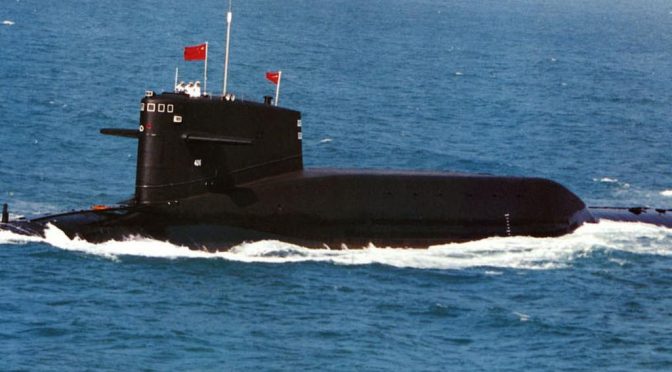By Sam Cohen
Welcome to the September 2016 members’ roundup. Throughout the month, CIMSEC members examined several international maritime security issues, including the successful testing of Raytheon’s SM-6 surface-to-air-missile by a Ticonderoga-class Aegis cruiser, developments surrounding the Littoral Combat Ship (LCS) program, the rise of non-state actors in international maritime security affairs, continued hostility between China and regional nations relating to the South China Sea maritime disputes, and the worsening of security tensions between American and Russian air and naval forces patrolling the Black Sea.
Dave Majumdar, for The National Interest, discusses the Raytheon SM-6 Standard surface-to-air missile test that recently set a new record for the longest-range over-the-horizon intercept in naval history. The interceptor, which also has a long-range anti-ship variant, is a central component of the U.S. Navy’s Naval Integrated Fire Control – Counter Air (NIFC-CA) battle network. He highlights that the missile is effective against cruise missiles, aircraft, ballistic missiles, and enemy surface combatants while its range is estimated to be as great as 250 nautical miles. He also explains that the SM-6 interceptor is a major reason for why the U.S. Navy is confident in its ability to operate in highly contested environments, including regions where near-peer competitor powers have employed anti-access/area-denial weapons, such as the Baltics or the Western Pacific.
Bryan McGrath, for Scout Warrior, provides several recommendations for how the U.S. Navy should methodically approach future fleet architecture and force structure planning. He explains that developing the fleet to meet the challenges of great power competition should be central to this approach, largely because the capabilities this requires will allow for other critical security demands to be met as a byproduct, including control over trade routes, combating non-state actors, and enforcing maritime security. He also suggests that the relationship between the Navy and the Marine Corps should be funded as an asymmetric advantage unique to American seapower capabilities, while Congress should increase the overall resource allocation the Navy receives in order to meet the rigors of growing great power dynamics and the increasingly complex, multi-domain operational objectives associated with those adversaries.
Steven Wills, for U.S. Naval Institute News, provides a review of the changes made to the Littoral Combat Ship (LCS) program and explains that although the ships’ new training procedures, modularity, and operational organization may seem revolutionary, these new features simply reinforce the ship’s core missions. He explains that the majority of the LCS force will be forward deployed in support of operational commander tasking while personnel swaps will be undertaken to keep the ships forward deployed for longer periods of time. He also adds that mission modules will be exchanged between different LCSs to meet strategic operational requirements. Although the LCS has received significant opposition from both military and political officials, he notes that the large numbers of LCSs planned for forward deployment will meet the fleet’s specific demand for 52 small combatant vessels, and more generally, the need for increased warfighting capacity across the force.
Paul Pryce, for The NATO Association of Canada, discusses the rise of non-state actors across the international maritime environment, highlighting the People’s Liberation Army Navy (PLAN) and the Chinese Coast Guard’s training and funding of fishing militias to support China’s territorial claims in the South China Sea. He explains that the advent of these actors and their practices represent an overall increase in hybrid warfare on the oceans, a development which is likely to undermine regional security across the highly contested waters in the Asia-Pacific. With non-state actors offering plausible deniability for the states that support their activities, he suggests that states should seek greater cooperation in the enforcement of international maritime law by launching frequent and functional joint patrols as a means of building mutual trust between countries. He explains that this trust will increase constructive dialogue towards resolving ongoing disputes and will mitigate the tensions non-state actors and militias can induce between nations.
Members at CIMSEC were active elsewhere during the month of September:
- Alex Calvo, at Japan Times News, is quoted in an article discussing the South China Sea and the maritime and territorial disputes surrounding Scarborough Shoal. He explains that China will likely make a move to increase their strategic posture near the Shoal, largely because the U.S. and regional allies have not explicitly threatened to use force to prevent such an action from occurring.
- Sam LaGrone, for U.S. Naval Institute News, provides an update on the Russian Sukhoi Su-27 Flanker fighter aircraft that came within 10 feet of a Navy P-8A Poseidon surveillance aircraft over the Black Sea. He notes that P-8A patrol aircraft are becoming increasingly active in the region as the Russian Navy expands its submarine presence in the Black Sea.
- Mina Pollmann, for The Diplomat, provides an analysis on the bankruptcy of South Korean shipping giant, Hanjin Shipping Co. She highlights the significance of the company’s 2.9 percent global market share of container shipping, and that the primary capital lenders for the company, led by the state-run Korea Development Bank, rejected the company’s restructuring proposal – ultimately resulting in Hanjin Shipping Co.’s bankruptcy protection.
- Christian Davenport, for The Washington Post, discusses the recent explosion of a SpaceX rocket and the comments made by the United Launch Alliance (ULA), who suggested that the explosion demonstrates the risks associated with choosing the lowest bidder on sensitive national security launch contracts.
- Kyle Mizokami, for Popular Mechanics, analyzes the U.S. Air Force’s proposal for Ground Based Strategic Deterrent (GBSD), which is intended to replace the Minuteman III land-based intercontinental ballistic missiles (ICBMs). He adds that GBSD will be designed to last until 2075, upgrade the nation’s ICBM force with new technologies, and will be cheaper to operate – with an estimated price tag between $62 and $85 billion dollars.
- John Grady, for U.S. Naval Institute News, discusses the decision by the U.S. House of Representatives Armed Services Strategic Forces Subcommittee to explore reforms on how the military uses space, and how the creation of a new command or agency for these operations may be necessary. In a second article at USNI News, he reviews comments made by the head of U.S. Strategic Command concerning North Korean nuclear testing and the development of more powerful rocket engines that could be used to deliver nuclear weapons to the United States.
- Ankit Panda, for The Diplomat, discusses China’s recent People’s Liberation Army Air Force (PLAAF) exercise where more than 40 aircraft flew through the Miyako Strait in the East China Sea. He explains how although the Japanese Air Self-Defense Force (JASDF) scrambled fighter aircraft in response, no Chinese aircraft encroached on Japanese territorial air space.
At CIMSEC we encourage members to continue writing, either here on CIMSEC or through other means. You can assist us by emailing your works to dmp@cimsec.org.
Sam Cohen is currently studying Honors Specialization Political Science at Western University in Canada. His interests are in the fields of strategic studies, international law and defense policy.
Featured Image: A P-8A Poseidon flying alongside a Lockheed P-3 Orion, close to Naval Air Station Patuxent River, Maryland, 2010 (U.S. Navy photo by Liz Goettee)





